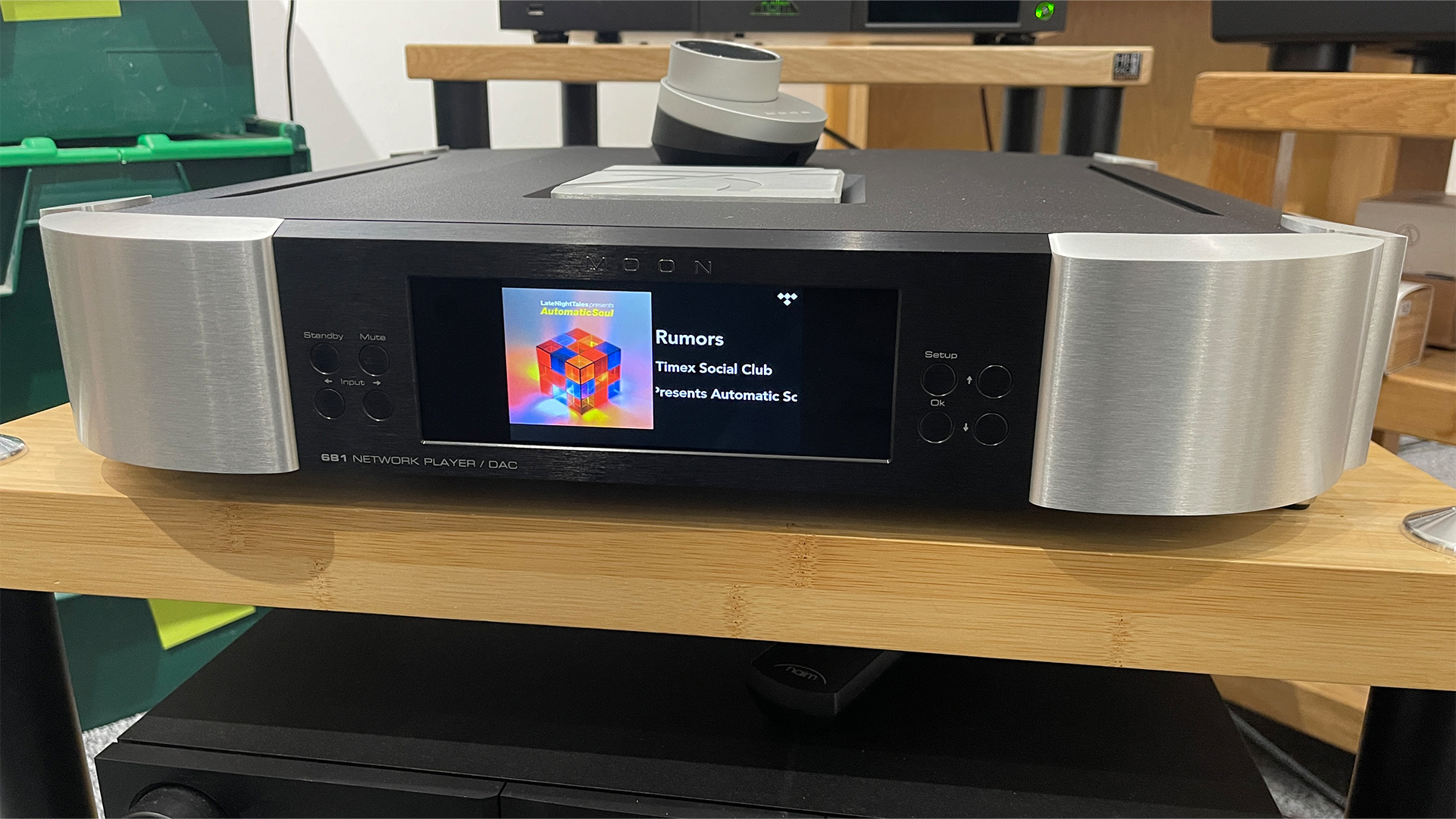What Hi-Fi? Verdict
Moon’s 681 high-end music streamer is as polished and cultured as they come
Pros
- +
Insightful, smooth and fluid performance
- +
Plenty of connectivity
- +
Excellent build and finish
Cons
- -
Trades sonic verve for refinement
- -
Bluetooth is limited to aptX
- -
No Chromecast
Why you can trust What Hi-Fi?
Moon as a brand has always dined at the premium table, but the arrival of the North Collection of products has reinforced its presence at the very top end of the market. The North Collection currently consists of three tiers, each comprising two products. The Moon 681 music streamer partners with the excellent Moon 641 integrated amplifier we reviewed a few months ago, forming the starter level.
The 700 and 800-series products are configured slightly differently, with a dedicated streamer/preamp partnered with a standalone stereo power amplifier. The range tops out with the 891 streamer/preamp that retails for £25,000 / $25,000 / AU$43,000.
Build & design
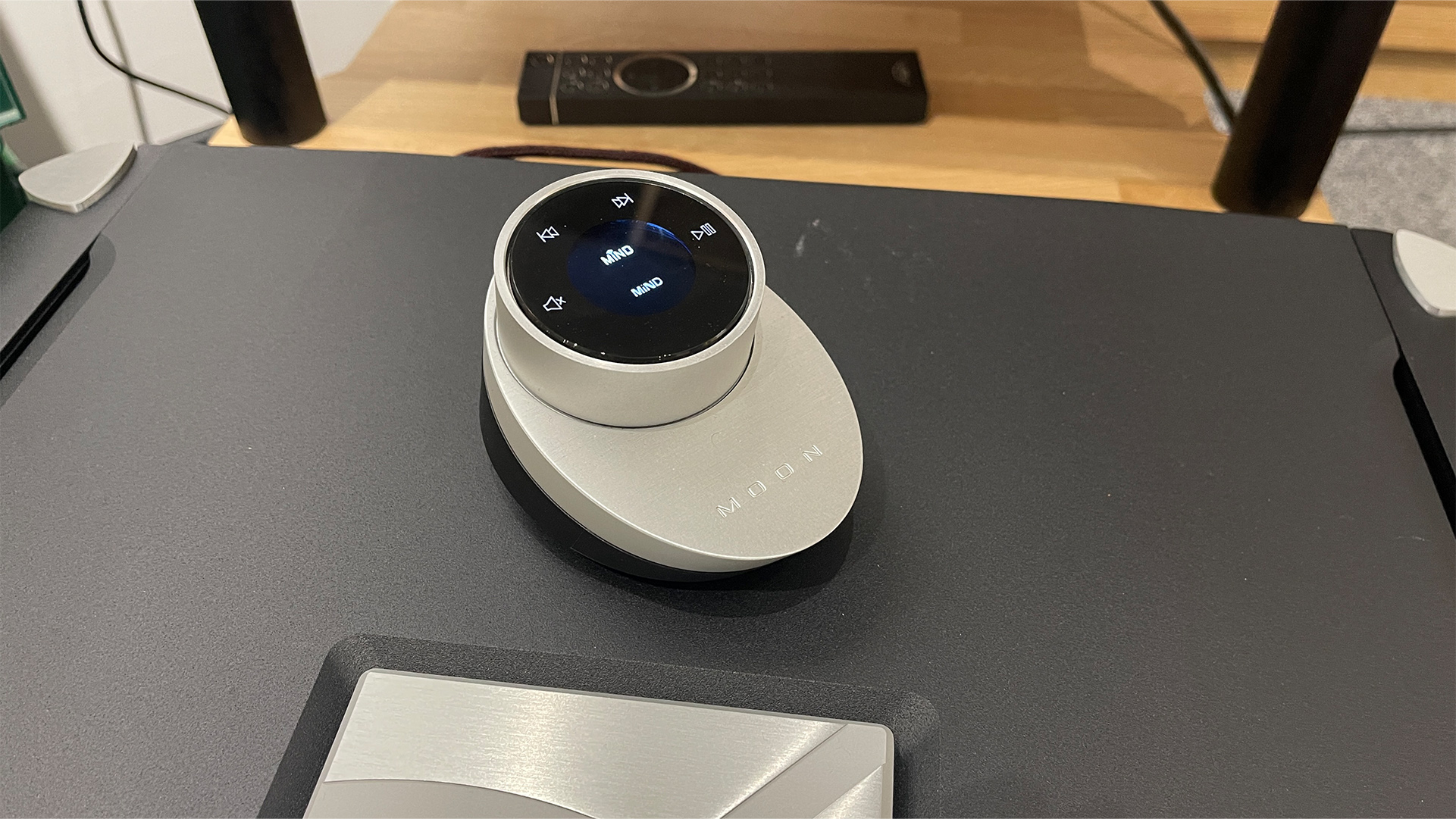
If the Moon 681 can offer a decent chunk of that range-topper’s performance at around half the money then it could really scare the competition. Our first impressions are hugely positive. The 681 oozes luxury in a way few rivals can match. Moon has long mastered the art of making its products look expensive. Here, the beautifully machined scoops and curves coupled with the visual contrast between the silver and black sections of the casework make quite some impression. The similarly-priced dCS Lina DAC (which, despite the name is also a music streamer and arguably one of the 681’s closest rivals) looks basic in comparison, despite being equally well made.
The 681’s front panel is dominated by a lovely 4.3in full colour OLED display. This is large enough to be read from across our test room and is crisp with it. That’s a good thing considering it has to be used to navigate the initial set-up of the product.
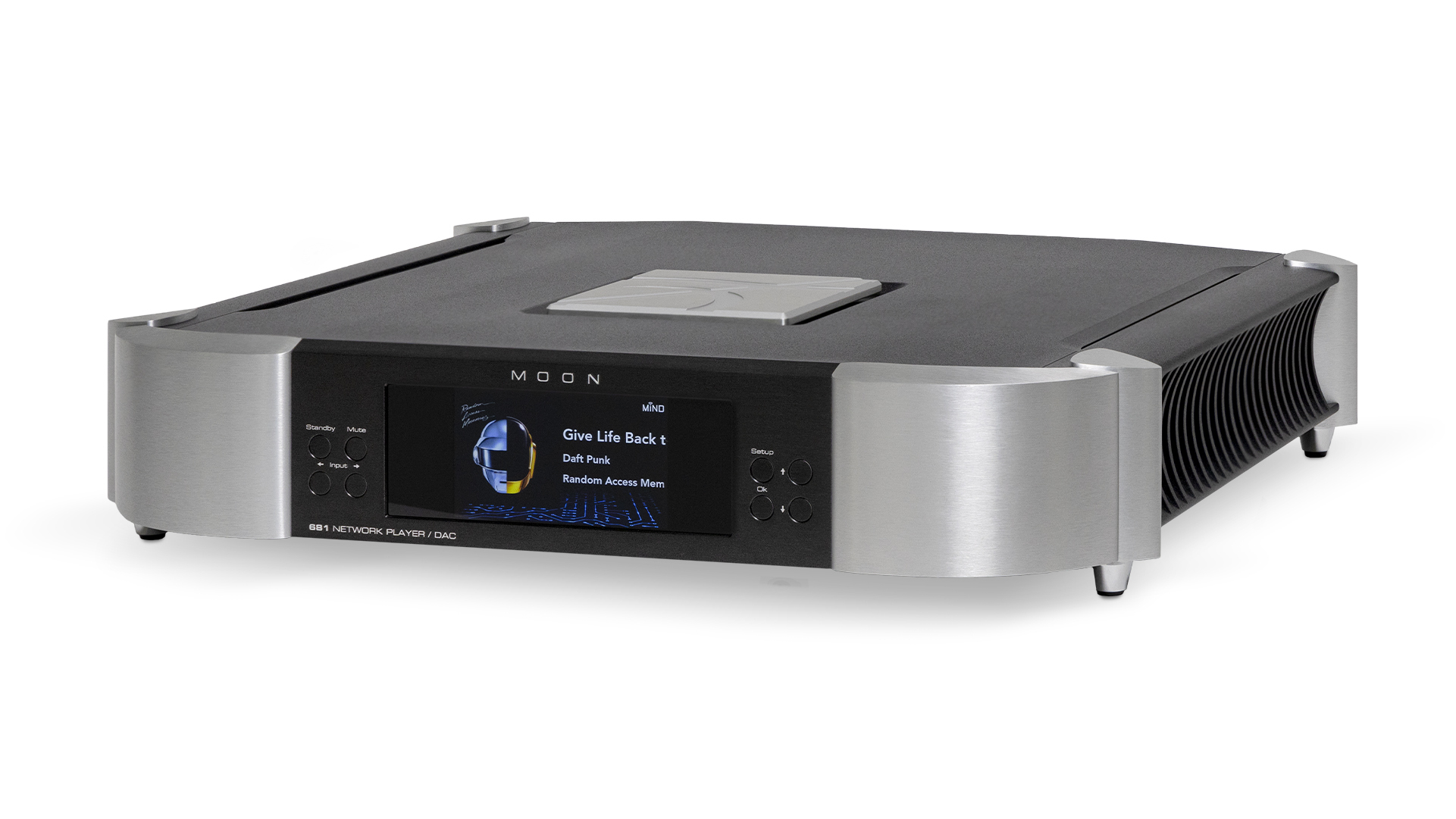
Streaming features UPnP, AirPlay 2, Spotify Connect, Tidal Connect, Deezer, Qobuz, aptX Bluetooth, internet radio
Network Wi-fi and Ethernet
Inputs USB Type A, USB Type B, optical x2, coaxial x2, HDMI ARC (2.0b), AES/EBU
Outputs Balanced XLR, single-ended RCA
Headphone output? No
Max file resolution 32-bit/384kHz, DSD256, MQA
Dimensions (hwd) 10.2 x 48.1 x 42.7cm
Weight 18kg
Using the menus it is possible to switch the 681’s analogue output from fixed to variable should you want to use it in a particularly minimalist system, partnering with a dedicated power amplifier or active speakers. There is a choice of three output gain levels – 2.0v, 3.5v and 6.5v – which helps compatibility. Moon clearly envisages the 681 being used in this way as the company’s engineers have gone to the trouble of designing a new hybrid volume control system that mixes digital attenuation with analogue gain. The aim is to deliver the sound with minimal distortion and a high level of transparency.
Elsewhere in the menus, you can allocate names to the inputs, connect to a home network wirelessly or wired and alter the display and standby settings. We are glad that Bluetooth is on the menu. This connection may not be the best from a sound quality perspective but it opens up this product, and by extension your system, to use with phones, tablets and computers, and that’s a useful thing. Having just praised Moon for including Bluetooth, we’re a little disappointed to find that it is limited to just aptX, rather than aptX HD or better. Given the 681’s price, we expect better. The lack of Chromecast is a bit of a shame too.
We have no complaints about the supplied remote handset though. The BRM-1 remote is a beautifully designed unit that connects to the 681 by a dedicated Bluetooth connection controlling the volume level and input selection. We love its smooth spinning volume dial and the small but sharp display in the centre. This handset is a pleasure to use and an object lesson to rival high-end manufacturers that persist in supplying cheap plastic wands with expensive products.
The same attention to detail can be found inside the 681’s lovely casework. Take the lid off (carefully) and you will find neatly arranged circuitry. Most of the front section is dominated by Moon’s MHP power supply module. This is encased in a steel box for shielded purposes, reducing the amount of interference that reaches the sensitive audio circuits. This power supply design uses both switching and linear technologies to deliver stable, regulated and low-noise power feeds to the parts of the circuitry that need it.
Features
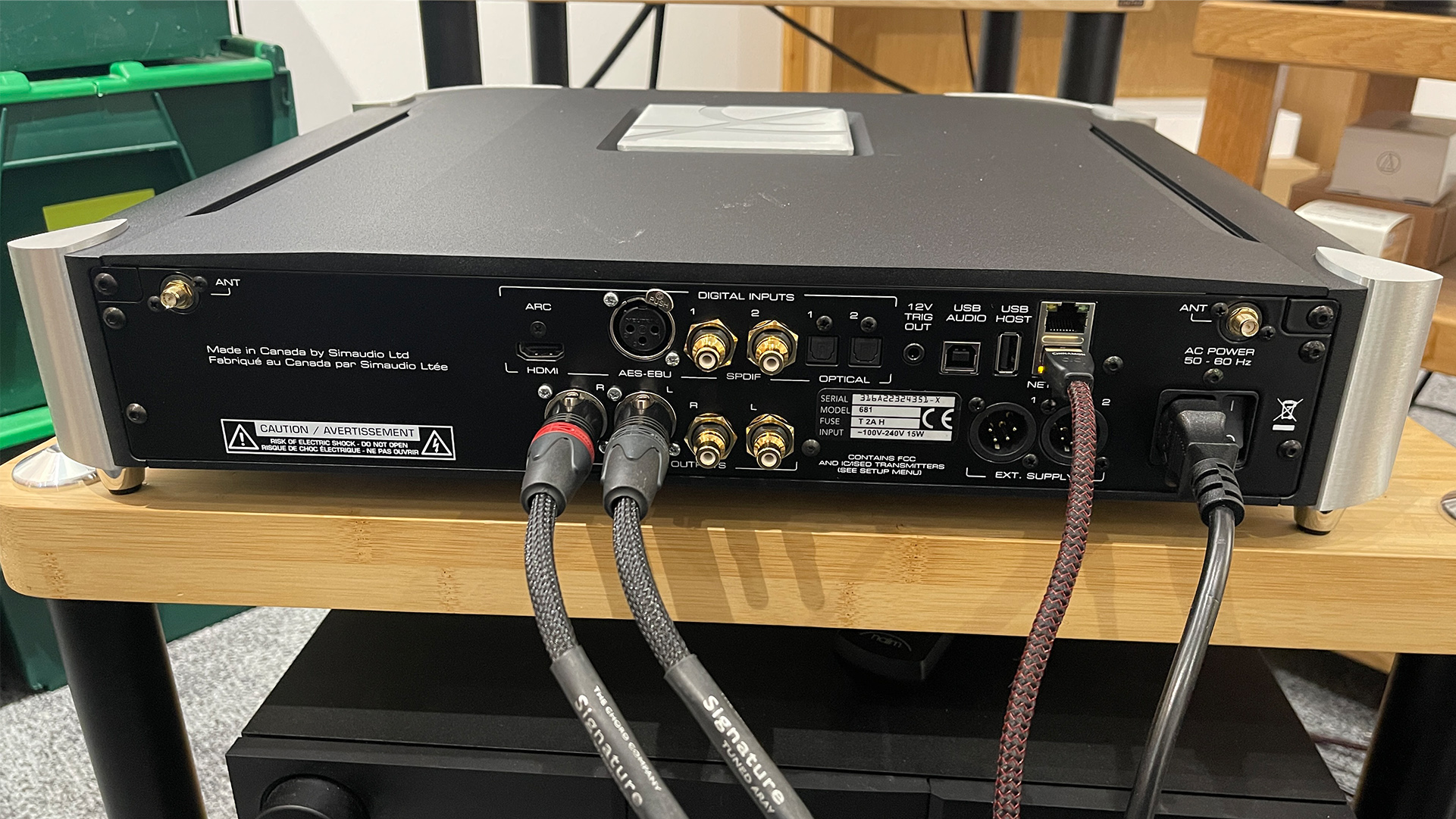
The 681’s streaming module is effectively the same as that in Moon’s MiND 2 standalone network streamer (£2500 / $2400 / AU$4500), though optimised to work in this context. The company has been evolving this technology for over a decade and that experience shows in the solid list of features and the stability of the platform. There is a good range of features here with Tidal and Spotify Connect on board alongside Deezer and Qobuz streaming services. Apple Airplay 2 is present as is MQA and the 681 is Roon-Ready certified. We see no issue with file compatibility; this streamer is happy to play PCM files up to 32-bit/384kHz and DSD256, which should be more than enough for most people.
You will find an ESS Sabre 9028 Pro chipset at the heart of the 681’s DAC module. This is an eight-channel design configured to work in stereo mode, with four channels used per side. This kind of arrangement tends to reduce distortion and noise levels, thus improving detail resolution. Moon’s engineers have worked hard to minimise jitter levels with the incoming data processed using an FPGA (Field Programmable Gate Array) for reclocking and great care taken in preserving the purity of the master clock signal in general.
The 681’s connectivity is good. Alongside the usual trio of USB (Type B), coax (x2) and optical (x2) sockets you will also find an AES/EBU digital balanced and, arguably even more useful, an HDMI ARC (2.0b). The inclusion of HDMI ARC means it is easy to connect your TV to your hi-fi and enjoy a far higher quality of AV sound. For those who crave better TV sound but don’t necessarily want to go to all the fuss of a true surround set-up, this could be a good solution.
The user experience of any streamer is largely determined by the quality of the partnering app. The Moon app is easy to navigate and intuitively arranged. The streamer is quick to respond to commands, and we have no issues with stability through our testing process, just as it should be.
Any music streamer at this level positively demands a high-quality system if it is to shine. During the test process, we connect the 681 to our reference Burmester 088/911 Mk 3 amplifier and ATC SCM 50 speakers, as well as its partnering 641 integrated amplifier. We have plenty of high-res music on our Naim and Melco NAS units as well as on our Macbook Pro laptop (loaded with Audirvana music-playing software).
Sound
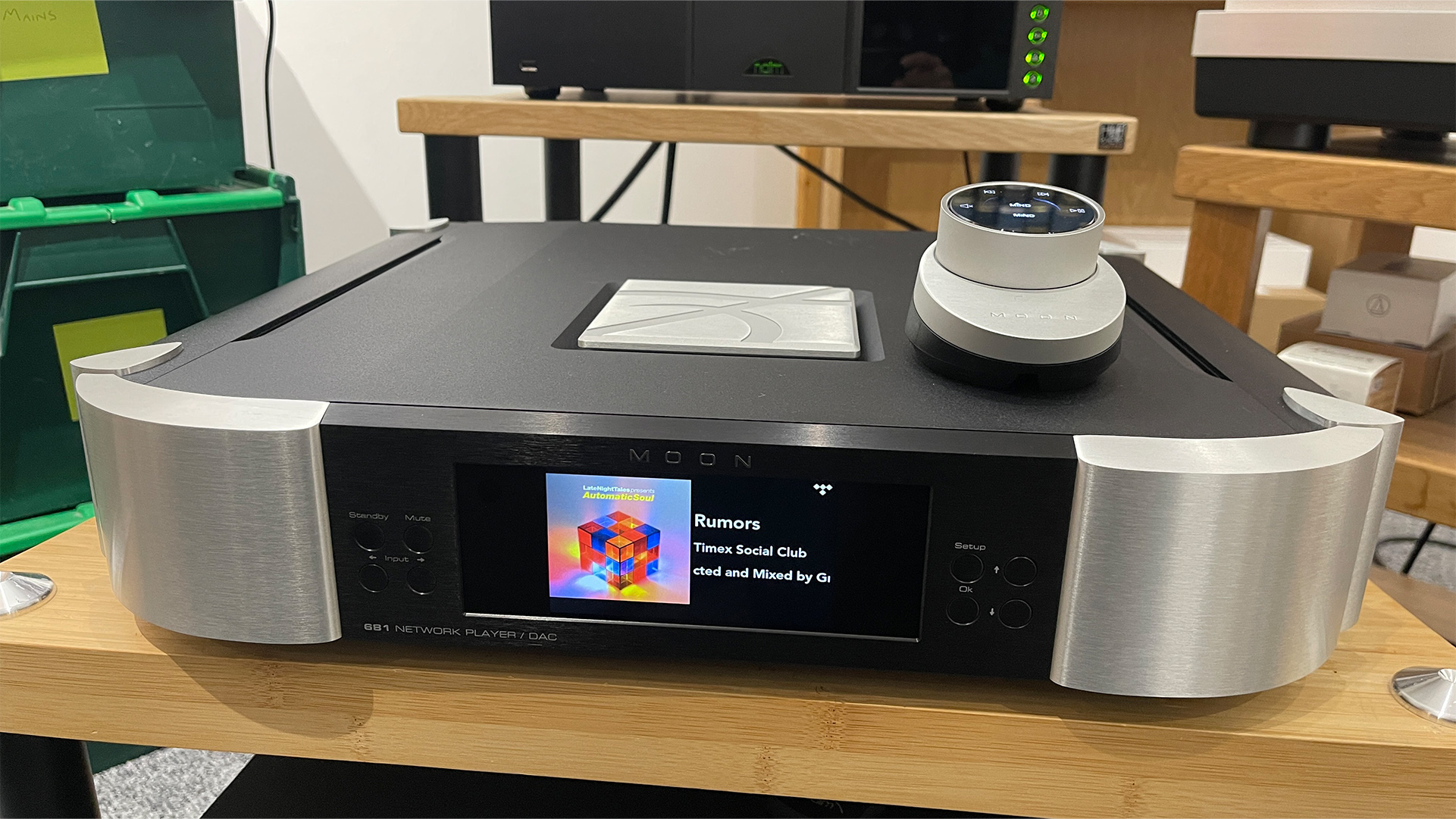
In our experience, Moon’s products tend to have a distinctive sonic character that majors on refinement, spaciousness and clarity. The 681 treads much the same path while delivering a level of insight that competes strongly with the class leaders. This streamer has an impressively clean presentation that digs deep into the fabric of the recording and paints on a pleasingly large-scale canvas. As we listen to a 24-bit/192kHz file of Mahler’s Symphony No.4 we can’t help but be impressed by the authority on show and the streamer’s ability to transition so fluidly from loud to quiet and back again. There is a strong sense of authority here, helped no doubt by the punchy and muscular way the 681 renders low frequencies.
There is no questioning the 681’s level of control and organisation either. It can follow low-level instrumental strands with ease while never losing grip of the musical whole and also keeps a steady hand when the music becomes demanding. Tonally things are full-bodied and balanced with no part of the frequency range getting undue emphasis. It is a smooth presentation with no sign of hardness or unwanted edge unless it is in the original recording to start with. Even then, the 681 is loathe to make a meal of things; an ideal trait if your music collection is built around what you like rather than recording quality.
For all its strengths we find ourselves wanting the Moon to deliver the sound with a bit more verve. This cultured streamer ticks most sonic boxes but trades a little of the music’s excitement in the process. A greater sense of attack and dynamic punch would be nice. We’re sure some will be fine with this, revelling in the classy sophistication of the sound, but we can’t help but crave a more visceral experience. Rivals like the even more transparent dCS Lina manage to give us that, as do cheaper alternatives such as Naim’s NSC 222.
Stevie Wonder’s Innervisions (DSD) confirms our findings. Songs such as Higher Ground sound a little sanitised and aren’t quite delivered with the full dose of rhythmic drive we know is there. Yet, it is still hard not to enjoy the Moon’s skill with vocals; the way it conveys the natural warmth and emotion in Wonder’s delivery is lovely. The 681 captures the rich tone of the early synthesisers used on this album beautifully and we can’t help but love the finesse with which it renders instrumental textures in general.

The quality of the DAC section is something of a highlight. Predictably, its sonic character is much as we’ve described but using both the Naim ND555/555 PS DR and our MacBook as sources, the Moon succeeds in sounding pleasingly transparent and expressive. It switches seamlessly between file formats and without hesitation. Connecting to Bluetooth proves swift and painless. Sure, the quality of sound through this input isn’t as good as any of the other options we try, but it is easy and convenient, and sometimes that’s all you need when you simply have to hear a song right now.
We dip into the set-up menus and change the 681’s analogue output to Variable. This allows us to bypass our Burmester 088 preamp and plug the 681 directly into the 911 Mk3 power. Used this way we notice an increase in absolute transparency and improvements in terms of clarity and crispness, but there are trade-offs when it comes to dynamic punch, natural warmth and authority. Given that the Burmester preamp costs around half as much again as the Moon that’s not bad at all, and suggests that, if practical, the direct option is one well worth investigating.
Verdict
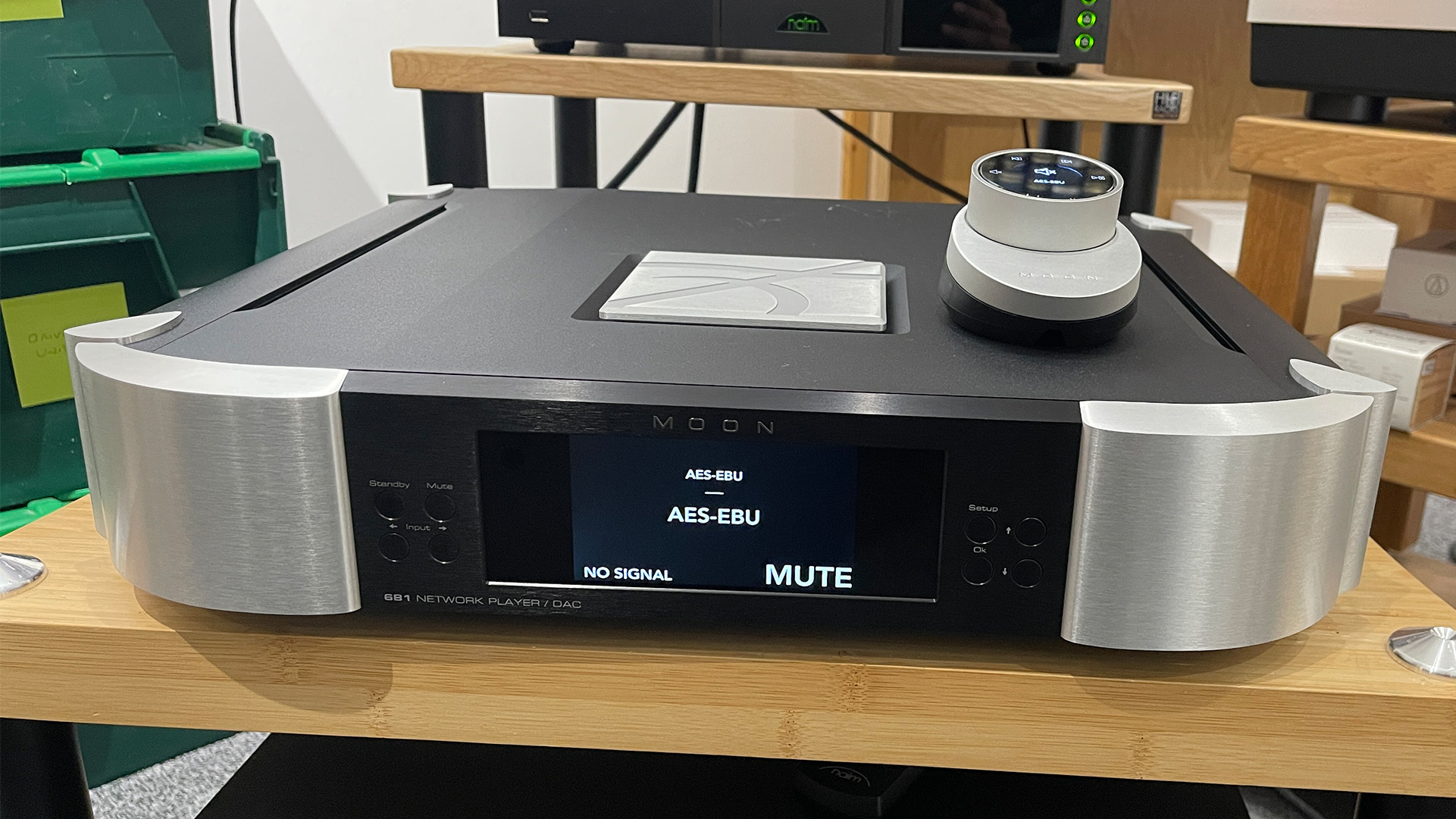
The Moon 681 music streamer makes a strong case for itself. It is well-built and, a few oddities aside, well-equipped. Provided you are in basic sympathy with its easy-going approach to music replay there is much to like here. It certainly deserves a place on the shortlist.
SCORES
- Sound 4
- Build 5
- Features 5
MORE:
Read our review of the dCS Lina DAC
Also consider the Naim NSC 222
Read our Chord DAVE review
What Hi-Fi?, founded in 1976, is the world's leading independent guide to buying and owning hi-fi and home entertainment products. Our comprehensive tests help you buy the very best for your money, with our advice sections giving you step-by-step information on how to get even more from your music and movies. Everything is tested by our dedicated team of in-house reviewers in our custom-built test rooms in London, Reading and Bath. Our coveted five-star rating and Awards are recognised all over the world as the ultimate seal of approval, so you can buy with absolute confidence.
